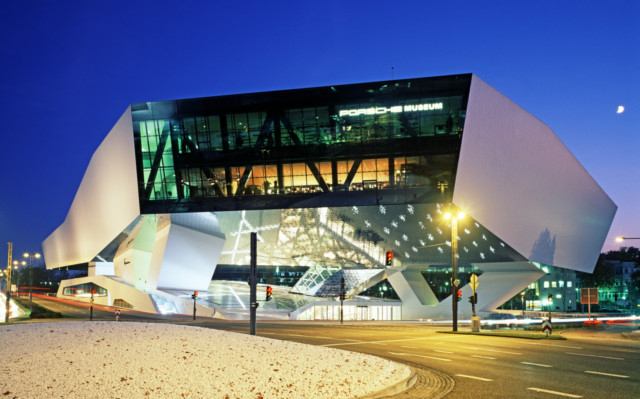
Other countries have their monuments. Germany has manufacturing — cars, more cars, lenses, guns and porcelain. And tourists to Germany have long learnt to take in the delights of the Gottlieb Daimler Memorial, the Villeroy & Boch museum, the Zeiss collection or the handmade Steiff plush toys.
The most famous are the car museums called, in tourist speak, Car Country Germany. The state-of-the-art BMW plant in Regensburg, where 10,000 skilled workers produce the BMW 1 Series, 3 Series and M3, offers a two-hour guided tour through the production process.
The Gottlieb Daimler Memorial in Stuttgart shows off the four-stroke gasoline engine pioneered by Gottlieb Daimler, who, with his business partner Wilhelm Maybach, built the first high-speed universal motor in 1883. They patented the half-horsepower engine, the predecessor of the engines found in today’s cars.
Also in Stuttgart, the city where the car industry was born, Daimler proudly parades the Mercedes-Benz Museum, which attracts 500,000 visitors every year.
The manufacturer has paid detailed attention to the building, too — out of 1,800 triangular panes of glass used in its interiors, no two are identical.
The Porsche Museum in Stuttgart houses around 300 restored cars, many in pristine condition and still in driving order.
Other examples of automotive museums include Volkswagen’s Transparent Factory or Gläserne Manufaktur in Dresden, where small teams of workers assemble Volkswagen’s luxury Phaeton cars in a purpose-built facility.
Not only do the museums serve as important links to historically rich manufacturing traditions they are also actively incorporated into tourist itineraries. The Villeroy & Boch museum, located in an old factory tied to the ceramics company’s headquarters — the Old Abbey on the waterfront of the Saar River — shows elaborate product documentation of its over 260- year history.
“We are collaborating very closely with the Saarland Tourism Board, which is promoting the Villeroy & Boch Discovery Centre, including our museum, with fixed rates and brochures on its home page as well as at tourism fairs,” Jessika Rauch, the brand’s PR manager, tells GN Focus.
Porcelain manufacturer Meissen, which has been at its current location since 1865, runs its own museum, complemented by a souvenir shop.
The chocolate museum in Cologne is home to a small glass chocolate factory. Here, all the machines have viewing windows, so visitors can see the production process of turning beans to bars.
As a bonus, the museum staff is happy to give you a taste of waffles dipped into the ten-foot high chocolate fountain.
From chocolate to guns, visitor friendliness is quite the German tradition. “We have about 20 visitor groups coming in a year,” Stephan Kern of the family-owned company, Schmidt Bender, tells GN Focus. The firm is famous for hunting scopes and illuminated reticle scopes.
Rifle scopes and other optical products are also lovingly preserved at the headquarters of Carl Zeiss. “We have a museum to show old technology and a building to showcase new developments,” says Tim Castagne, director of international sales.
The Optical Museum in Jena, meanwhile, documents the technical aspects of microscope production in a historic Zeiss workshop, established by Otto Henker and Otto Schotts, the heads of the department of medical-optical instruments at the Carl Zeiss plant.







